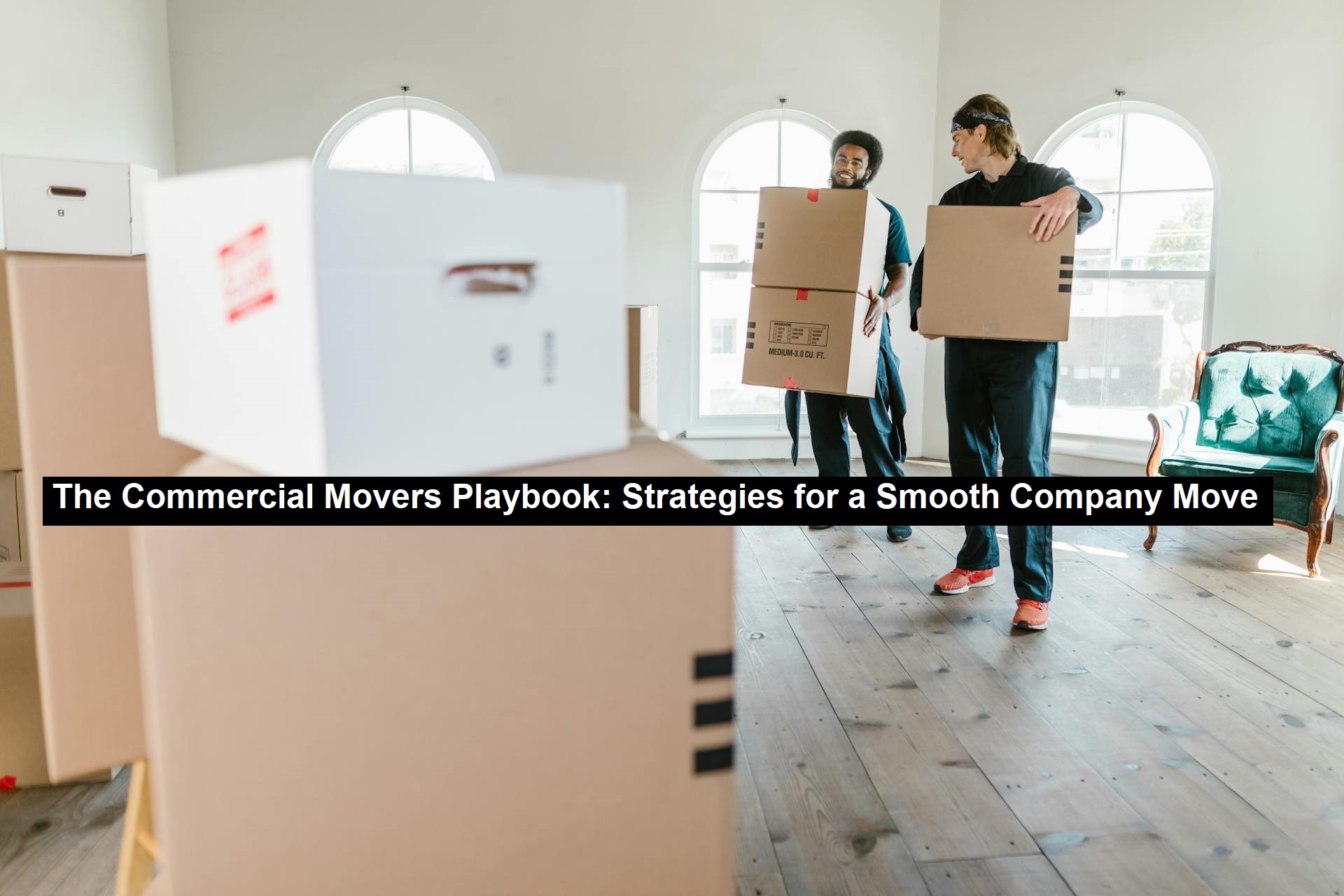Relocating a business is no small feat. From coordinating logistics to managing employees’ expectations, a company move requires careful planning, communication, and execution. Whether you’re upgrading to a larger office, moving closer to your target market, or expanding into a new city, a well-organized relocation can significantly benefit your business. This guide, “The Commercial Movers Playbook,” lays out the strategies and essential tips to ensure a smooth company move.
1. Start with a Comprehensive Moving Plan
One of the most critical elements of a successful move is a comprehensive plan. Creating a timeline for your relocation helps prevent last-minute issues and keeps your team on track. Ideally, your plan should start several months before the actual move date and include milestones such as:
- Setting a Moving Date: Establish a date well in advance, and make sure it aligns with your company’s operational cycles.
- Budgeting for the Move: Allocate a budget that covers packing materials, transportation, and professional commercial movers.
- Assigning Tasks: Delegate responsibilities to key team members. This could include appointing someone to coordinate with the moving company, others to handle communication with vendors and clients, and a team to manage the IT setup at the new location.
Having a detailed plan minimizes disruption, especially for businesses where downtime directly impacts revenue.
Read: The Ultimate Bed & Breakfast Escape: Exploring Key West and the Florida Keys
2. Choose the Right Commercial Movers
Selecting the right commercial movers is crucial for a smooth transition. Unlike residential moves, commercial relocations involve unique challenges like specialized equipment, sensitive data, and minimal downtime requirements. Look for a moving company with proven experience in business relocations. Here are some qualities to look for:
- Experience in Commercial Moving: Movers who understand the intricacies of moving office furniture, IT equipment, and other commercial assets are essential.
- Insurance and Licensing: Ensure the moving company is fully insured and licensed, which provides peace of mind in case of any damages or delays.
- Customized Services: Many commercial movers offer tailored services such as packing, furniture assembly, and technology setup to meet your specific needs.
Gather quotes from several movers, ask for references, and read reviews to make an informed decision. Remember, a reliable moving partner is an investment in your company’s smooth relocation.
3. Streamline Inventory and Equipment Management
Relocating is an excellent opportunity to review your existing inventory and equipment. Decluttering and organizing your assets before the move will save time, space, and money. Consider taking these steps:
- Dispose of Unnecessary Items: If there’s equipment or furniture that no longer serves your business, consider selling, donating, or recycling it.
- Label and Inventory All Items: Labeling each item and maintaining an inventory list ensures nothing gets lost or damaged. This is especially important for electronic equipment and sensitive documents.
- Back Up Digital Files: Ensure all critical data is backed up before the move. While most commercial movers handle equipment with care, it’s wise to safeguard your data independently.
By trimming down what you’re taking with you, you’ll reduce the complexity of the move and streamline the setup process in your new location.
4. Prepare for IT and Communication Infrastructure
One of the most challenging aspects of a company move is transferring IT and communication systems. Missteps here can lead to significant downtime. Consider hiring IT specialists to handle this part of the move, as they can ensure all equipment is dismantled and reassembled correctly. Here are some steps to follow:
- Schedule System Downtime: Notify employees and clients of any potential disruptions to avoid confusion.
- Coordinate with Internet Providers: Ensure the new location has reliable internet service and any other necessary connections in place well before moving day.
- Secure and Transfer Data: Moving servers, computers, and other data storage devices requires special handling. Commercial movers with experience in this area will have protocols for safely moving sensitive equipment.
By preparing for IT and communication challenges ahead of time, you’ll reduce the risk of data loss and ensure your team can get back to work quickly after the move.
5. Communicate with Stakeholders
A company move affects various stakeholders, including employees, clients, vendors, and service providers. Keeping everyone informed throughout the moving process is essential for a seamless transition. Here’s how to approach it:
- Inform Employees Early: Employees need ample notice to prepare for the changes. Hold meetings to address any questions and concerns they may have.
- Notify Clients and Vendors: Your clients and vendors need to know your new address and any potential service interruptions. Send out communications through emails, social media, and your website.
- Update Contact Information: Update your address on all digital platforms, business cards, and marketing materials so clients can easily reach you.
A clear communication strategy will help maintain business relationships and reassure your clients that their service won’t be affected.
6. Coordinate Office Layout and Setup in Advance
Planning the layout of your new office space in advance can save time and reduce confusion on moving day. Work with your commercial movers to understand the layout and pre-determine where everything will go. This involves:
- Designing Workspaces: Decide on the arrangement of desks, cubicles, and other workstations to maximize productivity and comfort.
- Mapping Common Areas: Plan the layout for meeting rooms, break rooms, and any other shared spaces.
- Prepping Utilities: Ensure utilities such as electricity, water, heating, and cooling are functional before moving in.
An organized setup will help your team settle in faster and feel comfortable in the new environment.
Conclusion
Relocating a business doesn’t have to be overwhelming. By following these strategies from “The Commercial Movers Playbook,” you can ensure a smooth, well-organized move that minimizes downtime and disruption. From selecting the right Commercial Movers to preparing your new office layout in advance, these steps will make your transition easier for everyone involved. Embrace the opportunity to refresh and reimagine your workspace as you move into a new chapter for your business.






